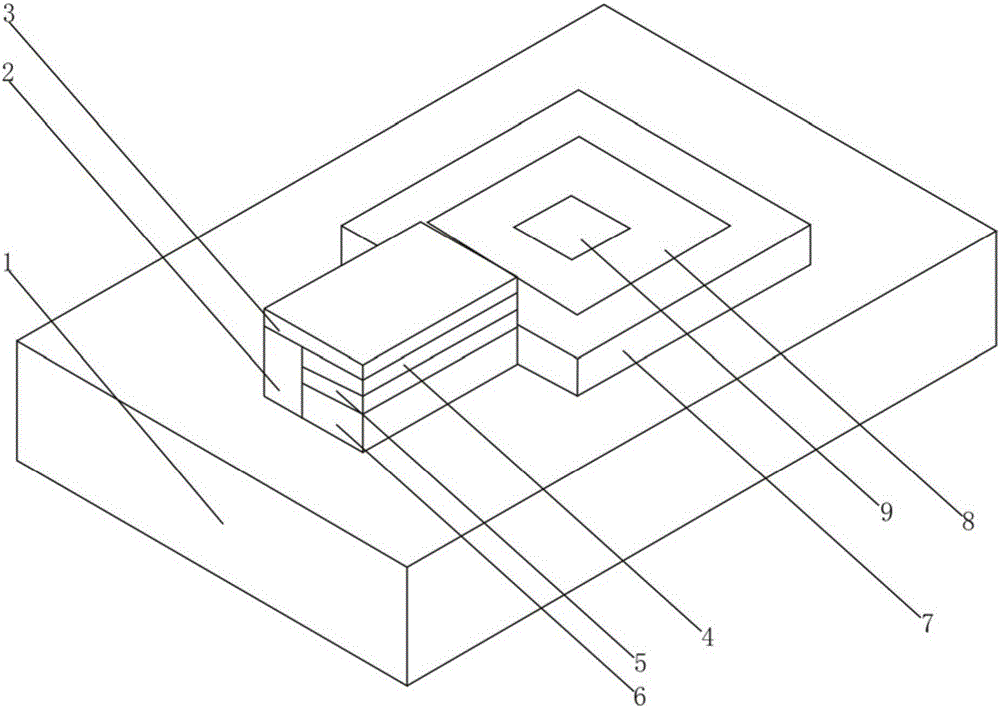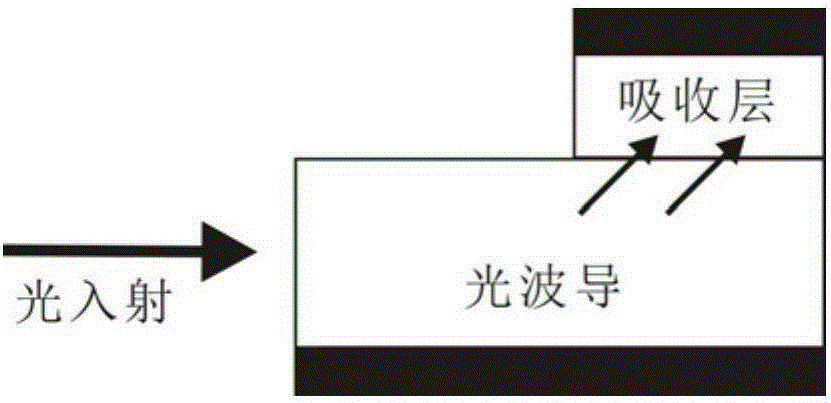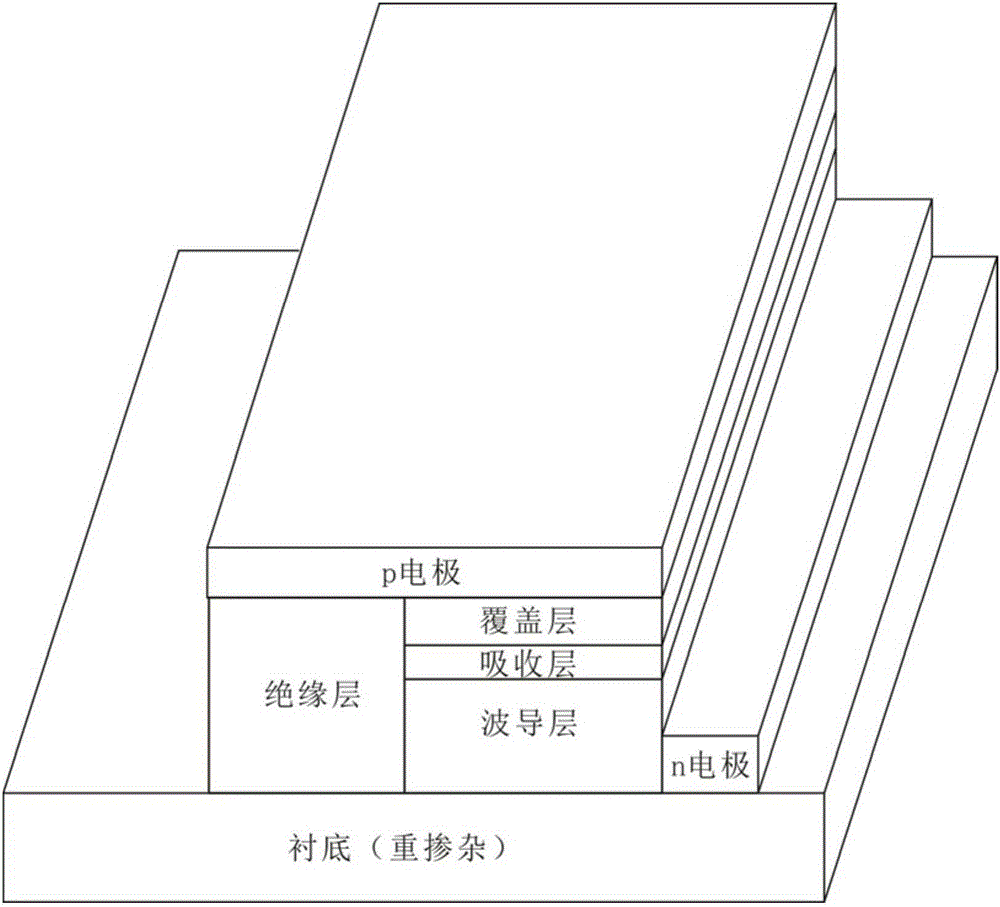Optical waveguide detector capable of eliminating parasitic capacitance
A technology of parasitic capacitance and optical waveguide, which is applied in the direction of semiconductor devices, circuits, electrical components, etc., can solve the problems of small waveguide layer thickness, large total capacitance, large cross-sectional area and distance, etc., to improve response bandwidth and reduce total capacitance , Improve the effect of electrical conductivity
- Summary
- Abstract
- Description
- Claims
- Application Information
AI Technical Summary
Problems solved by technology
Method used
Image
Examples
Embodiment Construction
[0024] The present invention will be further elaborated below in conjunction with the accompanying drawings and specific embodiments.
[0025] Such as figure 1 As shown, the optical waveguide detector for eliminating parasitic capacitance of the present invention comprises a substrate 1, an insulating layer-2, a p-electrode 3, a cover layer 4, an absorption layer 5 and a waveguide layer-6, and the insulating layer-2 is placed on the substrate 1, one side of the waveguide layer 6 is in contact with one side of the insulating layer 2, and placed on the substrate 1 at the same time, the absorbing layer 5 is placed on the waveguide layer 6, and one side of the absorbing layer 5 is in contact with one side of the insulating layer 2 , the cover layer 4 is placed on the absorber layer 5, one side of the cover layer 4 is in contact with the insulating layer 2, and the top height of the cover layer 4 is consistent with that of the insulating layer 2, and the p-electrode 3 is placed be...
PUM
 Login to View More
Login to View More Abstract
Description
Claims
Application Information
 Login to View More
Login to View More - R&D
- Intellectual Property
- Life Sciences
- Materials
- Tech Scout
- Unparalleled Data Quality
- Higher Quality Content
- 60% Fewer Hallucinations
Browse by: Latest US Patents, China's latest patents, Technical Efficacy Thesaurus, Application Domain, Technology Topic, Popular Technical Reports.
© 2025 PatSnap. All rights reserved.Legal|Privacy policy|Modern Slavery Act Transparency Statement|Sitemap|About US| Contact US: help@patsnap.com



